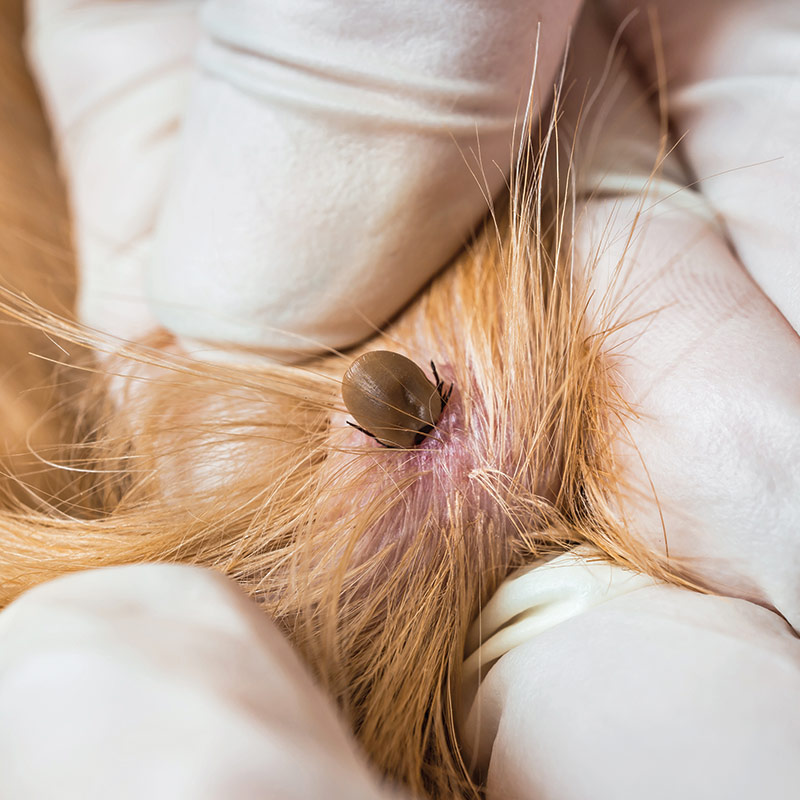In Australia adult ticks are in their highest numbers during the warmer months of August to February, but they can be found throughout the year in some areas. There are a number of tick species that affect companion animals which can make pets very sick and even be fatal.

Checking your pets for ticks is something that should be done daily during tick season, especially if you live in a tick area. Even if your pet is on a preventative tick product it is essential to still check them and as preventatives are not always 100% effective.
Ticks start out very tiny, the size of a pinhead, and almost impossible to see. Once attached they start to feed on the animal’s blood and then they enlarge. Ticks can be very hard to find, particularly on thick coated or long haired pets.
How to effectively look for a tick on your pet
- Run your fingers through the animal’s coat feeling the skin for lumps with your fingertips.
- Start at the pets nose looking closely at the face, ears (inside and out) and the lips (checking the underside of the lips as well)
- Then work slowly down the neck, carefully checking any skin folds.
- Remove their collar and thoroughly check where the collars sits.
- Move down the neck and down the shoulder of one leg, checking the paw, toes and between the toes and then move back up the leg. Repeat on other front leg.
- Continue checking the animals back and sides and then check each hind leg and paw one by one.
- Be sure to check the entire length of the tail, particularly under the tail and around the anus.
- Then thoroughly check their chest, stomach and under their armpits (front and back).
- Do the search slowly, methodically and as thoroughly as possible.
- Pay particularly close attention to areas where ticks often hide like the paws, between the toes, under the armpits, around the anus, under collars, in skin folds, under the lips or in the ears.
- Sometimes ticks have already fed and fallen off before you find them. This will usually leave a “tick crater” on the skin which looks a small indentation where the tick was attached and is often raised around the edges.
In this video vet-n-pet DIRECT’s resident vet Dr Glenn, with side kick Beau, walks you through the most effective way to check your dog for a tick. From the way your fingers move through the coat to the most common places to find them.
If you do happen to find a tick you need to remove it quickly and safely, to prevent any further toxins being injected into the pet’s bloodstream. We have put together some tips on how to remove a tick which can be found here.
To find out more about the types of ticks in Australia and how they can affect your pet please see out article on Ticks in Australia.
